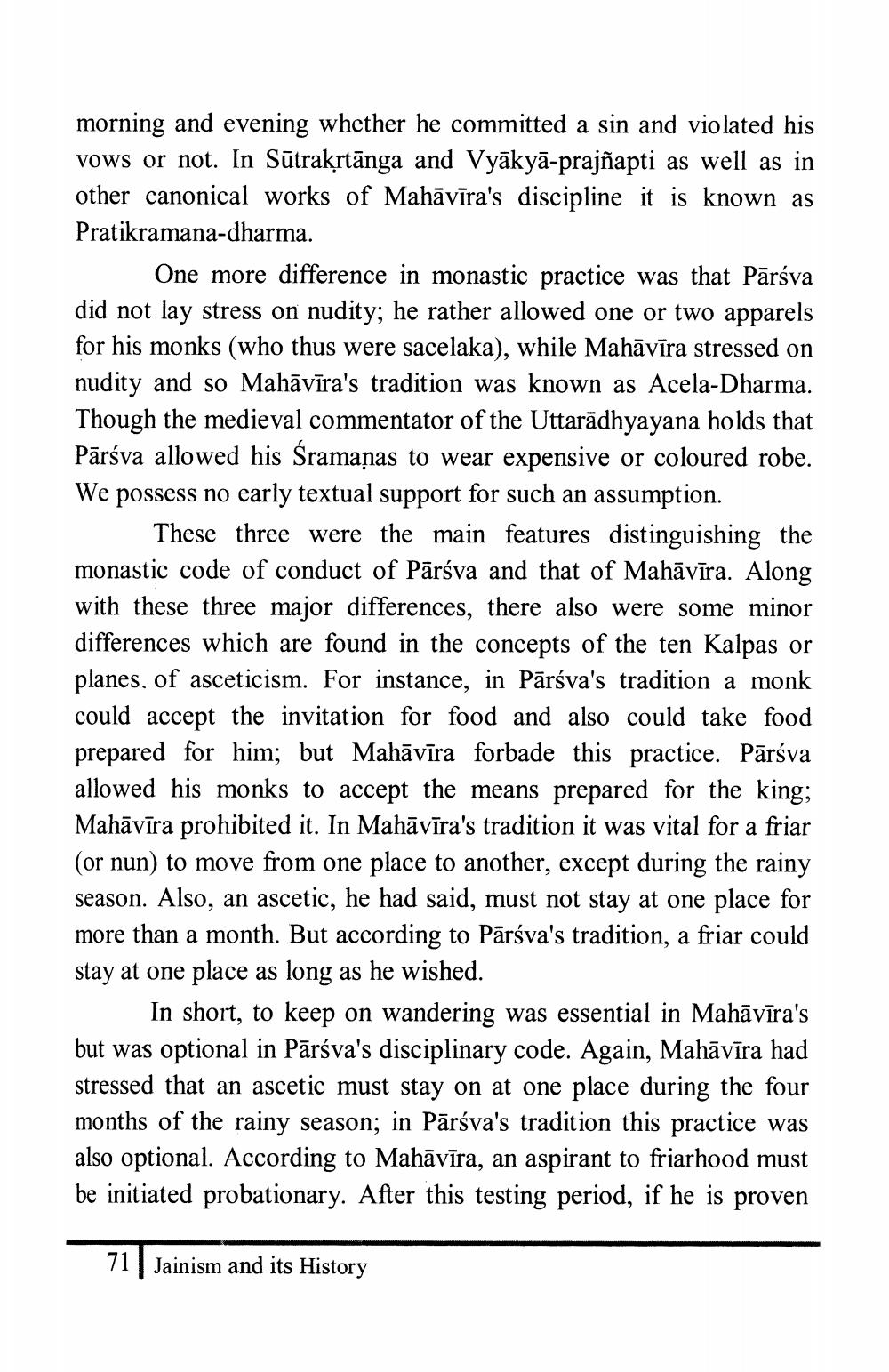________________
morning and evening whether he committed a sin and violated his vows or not. In Sūtrakrtānga and Vyākyā-prajñapti as well as in other canonical works of Mahāvīra's discipline it is known as Pratikramana-dharma.
One more difference in monastic practice was that Pārsva did not lay stress on nudity; he rather allowed one or two apparels for his monks (who thus were sacelaka), while Mahāvīra stressed on nudity and so Mahāvīra's tradition was known as Acela-Dharma. Though the medieval commentator of the Uttarādhyayana holds that Pārśva allowed his Sramaņas to wear expensive or coloured robe. We possess no early textual support for such an assumption.
These three were the main features distinguishing the monastic code of conduct of Pārśva and that of Mahāvīra. Along with these three major differences, there also were some minor differences which are found in the concepts of the ten Kalpas or planes, of asceticism. For instance, in Pārsva's tradition a monk could accept the invitation for food and also could take food prepared for him; but Mahāvīra forbade this practice. Pārsva allowed his monks to accept the means prepared for the king; Mahāvīra prohibited it. In Mahāvīra's tradition it was vital for a friar (or nun) to move from one place to another, except during the rainy season. Also, an ascetic, he had said, must not stay at one place for more than a month. But according to Pārsva's tradition, a friar could stay at one place as long as he wished.
In short, to keep on wandering was essential in Mahāvīra's but was optional in Pārsva's disciplinary code. Again, Mahāvīra had stressed that an ascetic must stay on at one place during the four months of the rainy season; in Pārsva's tradition this practice was also optional. According to Mahāvīra, an aspirant to friarhood must be initiated probationary. After this testing period, if he is proven
71 Jainism and its History




